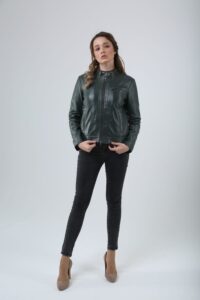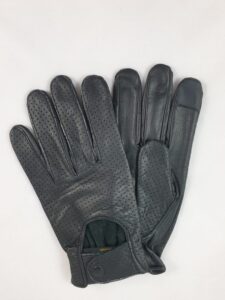Redefine your style with Aliganto
Buying guide:
Choosing and buying a leather jacket can be a daunting prospect. It’s not a cheap item (at least not if you want it to last) and it is very difficult to judge the quality or fit when searching online. There is also a lot of technical jargon used, particularly in the descriptions of leather that often isn’t explained.
So we have written this buying guide to help you in your research. We’ll start by describing the different types of leather used in garment manufacture and what their strengths and weaknesses are. Then we’ll go on to discuss the different styles that are out there. Some styles suit particular body shapes and we will explain why. Aside from fashion there are also very good reasons why certain features appear on leather jackets. We’ll go through those so that you know what to look for, and more importantly, what to avoid.
And finally we’ll highlight some useful tips which will help you judge the level of care and quality that have gone into the manufacture of the garment.
By the end we hope that you will feel confident that you can make an informed purchase.
Types of Leather Used in Jackets
We are often asked, ‘which is the best quality hide for a leather jacket?’ The annoyingly vague answer is, ‘whichever suits the style and function of the jacket best’ This is an important point and worth remembering. The type of leather used should always be dependent on the style and purpose of the garment. Beware of retailers who only use one type of leather in all their jackets. It suggests they don’t fully understand the subtleties and characteristics of the material.
The major distinction between leather types originates with the animal that the hide came from. The general rule is the larger the animal, the thicker and heavier the leather.
Cow and buffalo – The toughest of the hides and used in shoes, furnishings as well as jackets. The leather is on the stiff side and offers excellent abrasion resistance and protection but at the expense of weight, drape and comfort. You will often find it used in motorcycle protective gear. and biker styles where toughness is the prime consideration. Jackets made of cow hide can take a long time to ‘wear in’. Of the two, buffalo hide has more grain than cow.
Sheep and lamb – finer grained, more supple and lighter weight than cow but still tough and durable, this leather is often described as having a ‘buttery’ feel. Sheep hides offer a good balance between comfort, style and strength. They particularly suits jacket styles where suppleness is important such as bomber jackets, blazers and reefers.
Pig – Cheap and not particularly cheerful. The leather made from pig skin is thin, plasticy with a shiny finish and very poor durability. Pigskin is often used when price is the most important factor so we recommend you avoid it where possible. Be particularly suspicious of leather jackets retailing for less than £100 ($150) as pig may have been used to keep the price down.
Leather Finishes
Once you’ve established the type of hide you require then the next step is to look at the tanning process that has been applied to the hide. Different processes produce distinct finishes which affect the handle and the appearance of the leather.
Nappa/Napa – Is a lengthy and complicated tanning process applied to full grain sheep or lamb hides that results in exceptional softness, suppleness and durability. A hide that is described as nappa is therefore amongst the highest grade of leather that can be achieved but is correspondingly expensive. Any that claim to be made of a nappa leather and are retailing for less than £100 ($150) should be viewed with some scepticism.
Aniline – This is leather that has been treated with aniline, a transparent chemical which allows the hide to be coloured and softened without concealing the natural tones and shades and blemishes of the animal. It is applied to cow, buffalo and sheep hides and produces a natural, mottled appearance that also allows the skin to breathe. Particularly good for brown and tan leather jackets.
Nubuck – In this process the top layer of full grain hide is buffed or very finely sanded to produce a soft, velvety finish similar to suede. However the quality is much higher and so is the price. Nubuck leather jackets are more susceptible to water staining and therefore benefit from waterproof finishes.
Suede – In which the underside of the hide is used. This is more fibrous with a matt, napped finish but lacks the durability of the a full hide. Like nubuck it is prone to discolouration when in contact with water unless a treatment has been applied.
Split – Used as a cost cutting measure, the top layer of the hide is sliced away resulting in two thinner layers. It allows some retailers to market jackets at very low prices whilst still claiming they are ‘leather’. Avoid.


